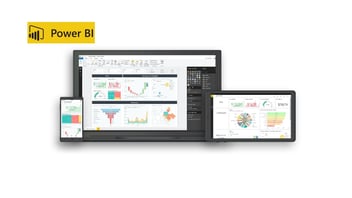We explore the difference between data science and data analytics, two disciplines that are closely related but serve different functions.
The world of data is complex and difficult to understand, especially for those who are not experts in the subject. Likewise, as the possibilities for creating and innovating with data increase, the difficulty of keeping up to date with the terms and roles related to data processing grows. This article explains the difference between data science and data analytics.

One of the main confusions regarding data terminology involves data science and data analytics, two closely aligned professional areas that can overlap, although they generally serve different functions.
Although both data science and data analytics apply statistics, mathematics and programming, they do so for different purposes. Thus, the professional profiles of these two data disciplines are also clearly distinguished and require different skills, knowledge and abilities.
What is data science and what is it for?
Data science is a discipline linked to data that has evolved over time. Today, however, the main function of data science is considered to be the processing of large amounts of data collected by companies so that they can be analysed (data analytics) or used in other business activities, usually related to business intelligence.
Basically, data scientists are in charge of transforming 'dirty' data into understandable, quality and usable "material" for the development of business actions.
Data science includes multiple sciences and activities such as machine learning and deep learning, data integration, the development of algorithms based on mathematics, etc. In addition to being responsible for ensuring that data can be used and subsequently transformed into business insights that will serve as the basis for strategic decision-making, data scientists also work on the transformation and loading of data through processes such as ETL or ELT.
After all, the ultimate purpose of data is to serve as the basis for the business decision-making process so that executives can make data-driven decisions. However, for this to happen, data must have been previously processed. As we always repeat in this blog, data is not information.
Broadly speaking, data science can be divided into three sub-branches: data preparation, data cleaning and data analysis. Therefore, data analytics is part of data science.
What is data analytics?
Data analytics is a part of data science particularly focused on the analysis of data. In other words, a data analyst is, in a sense, a data scientist who is an expert in analysing data through analytics and BI tools. While a data scientist transforms the collected data so that it can be used for operations (such as data analytics), a data analyst is in charge of finding trends among the data sets, transforming the data into performance indicators, identifying relevant insights, drawing conclusions, and so on.
In today's business ecosystem, data analysis is essential for the proper functioning of any organisation, as companies and senior decision makers require immediate information to make business decisions.
Thus, while a data scientist transforms data into processable data sets, data analysts transform data into information and information into insights that should foster better strategic decision making by business leaders.
However, although business intelligence professionals perform similar tasks, we should not confuse data analytics with BI. Business intelligence consultants work with much smaller amounts of data, usually already established, ordered and referenced, and have a more concrete and limited analytical capacity.
In this sense, a data analyst can work to achieve a myriad of business goals: improving operational efficiency, identifying business opportunities, finding inefficiencies in productivity, optimising the customer experience or the business model, etc.
What is the difference between data science and data analytics?
As we have already seen, data analytics is part of data science. Thus, the main difference between the two is their approach. While data science has a global focus and encompasses any action related to the treatment of data with a discovery purpose, data analytics focuses on the analysis of data to obtain business insights that support business decision-makers, focusing on the resolution of existing business problems.
One of the most significant differences between the two is that data science professionals are in charge of asking questions while data analysts are in charge of answering them.
Below we mention some of the specific tasks and competencies of each professional profile:
Data science tasks and skills:
- Data processing, transformation and cleansing.
- Problems, anomalies and/or trends discovery.
- Predictive analytics / Forecasting.
- Data mining.
- Development of algorithms.
- Machine learning and deep learning models.
- Presentation of results, questioning and ad-hoc analysis.
Data analytics tasks and skills:
- Solving business problems and any business activity inefficiencies.
- Analysing the information contained in the data to obtain business insights.
- Ensuring the quality and reliability of data (data quality).
- Tracking and mapping of the data pipeline.
- Calculation of metrics and indicators (statistical analysis).
- Answering specific questions.
Data science vs. Data Analytics: Which one is better?
The comparison between data science and data analytics is not a matter of which one is better, but rather a matter of which one is more suitable for a specific purpose or business objective. Both data science and data analytics are valuable and complementary fields that serve different roles in extracting insights from data.
Data Analytics:
- Focus: Data analytics is more focused on analyzing past data to understand trends, patterns, and correlations. It involves using statistical methods, data exploration, and visualization techniques to gain insights from historical data.
- Purpose: Data analytics is well-suited for businesses seeking descriptive and diagnostic insights. It helps answer questions like "What happened?" and "Why did it happen?" It is commonly used for business intelligence, reporting, and performance optimization.
Data Science:
- Focus: Data science involves a broader scope and combines elements of statistics, machine learning, programming, and domain knowledge to extract knowledge and make predictions from data.
- Purpose: Data science is geared towards predictive and prescriptive insights. It is used for solving complex problems, building predictive models, and making data-driven decisions. Data science also includes tasks like data engineering, feature engineering, and model deployment.
What is better for a business: data science or data analytics?
The choice between data science and data analytics depends on the specific needs, goals, and resources of the business. Both data science and data analytics offer valuable insights and can drive data-driven decision-making, but they serve different purposes and require different skill sets. Here are some considerations to help determine which is better for a business:
Choose data analytics if:
-
Historical Insights: If the primary need is to analyze past data, understand trends, and gain descriptive insights into business performance, data analytics may be more suitable. Data analytics is well-suited for generating reports, dashboards, and business intelligence.
-
Limited Resources: Data analytics can often be implemented with less complexity and resource investment compared to data science. If the business has limited data expertise or budget constraints, data analytics may be a more feasible option.
-
Performance Optimization: If the goal is to optimize existing processes, identify inefficiencies, and improve current operations based on historical data analysis, data analytics is a practical choice.
Choose data science if:
-
Predictive Insights: If the business needs to make predictions, build predictive models, or develop algorithms to forecast future trends and outcomes, data science is the more appropriate option. Data science leverages machine learning and statistical methods for predictive analysis.
-
Complex Problem Solving: If the business faces complex challenges that require advanced data analysis, data engineering, and machine learning, data science can provide the tools and techniques to solve these problems effectively.
-
Data-Driven Innovation: If the goal is to create innovative solutions, develop new products or services, or drive business growth by leveraging data, data science can offer valuable opportunities for data-driven innovation.
Ultimately, the decision may not be an exclusive one. Many successful businesses adopt a hybrid approach, leveraging both data analytics and data science based on their specific needs and objectives. Data analytics can provide foundational insights and historical context, while data science can drive predictive modeling and help the business stay ahead of trends and make informed decisions for the future.
To make an informed decision, it is essential for businesses to assess their specific requirements, the complexity of their data-related challenges, the availability of data expertise, and the strategic goals they aim to achieve through data-driven approaches.
Data analytics is a branch of data science. Thus, data science is a much more global and less specific discipline than data analytics. While one is concerned with enabling data to be used, the other's purpose is to analyse data and help managers make better business decisions
In summary, data analytics is suitable for businesses looking to understand past trends and make data-driven decisions based on historical data. On the other hand, data science is more appropriate when businesses seek to build predictive models, develop advanced algorithms, and leverage machine learning to make future predictions and optimize processes.
For many organizations, the best approach is to leverage both data science and data analytics in tandem. Data analytics provides a foundation of insights from historical data, while data science can take those insights further by building predictive models and driving future-oriented strategies. Each field has its unique strengths, and when combined effectively, they can maximize the value extracted from data.



